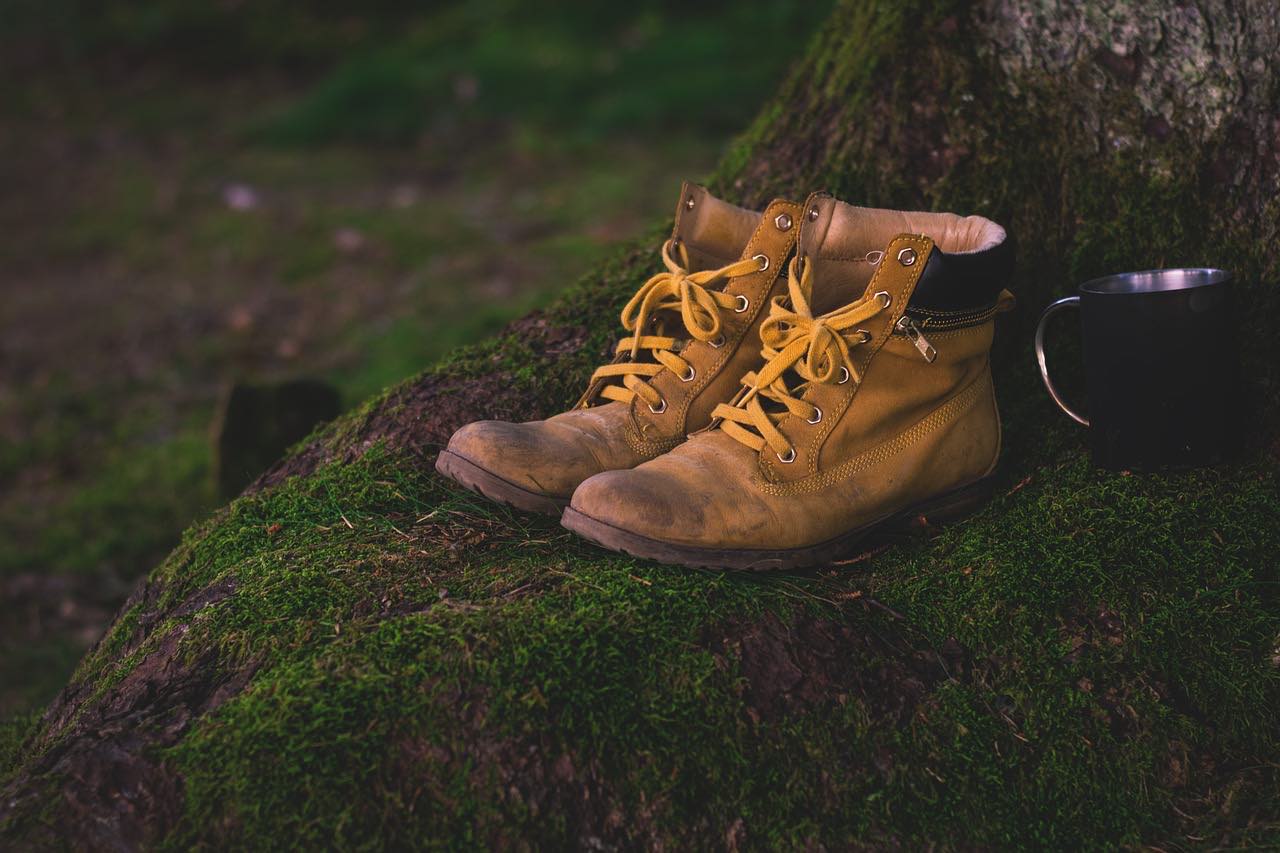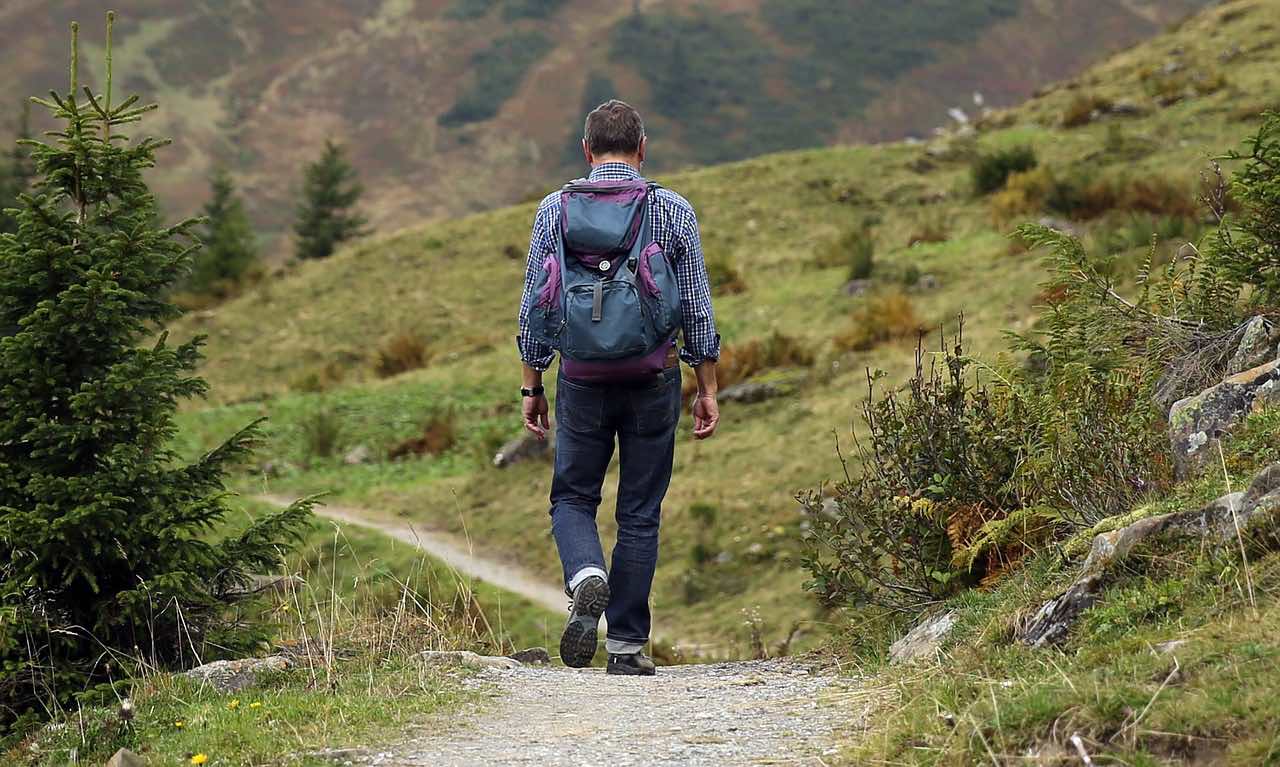Although for beginners, I always recommend hiking in groups, once you’ve gained some experience, hiking alone has its benefits too. It can be a life-changing experience that makes you feel confident about your abilities. It’s not really that dangerous as some movies portray it to be. But just like every other type of hiking, you must consider a few safety tips when hiking alone.
1. Choose A Popular Trail
Though you’re hiking to enjoy solitude, choose a trail that is moderately populated. This ensures you have someone within your eyesight if you’re facing an emergency.
A well-marked trail cuts down the confusion and makes up for your mediocre navigation skills (which you should hone up with time).
While picking a trail to hike alone, you should consider its elevation gain, length, difficulty, and fitness levels. You can find such details of popular trails on the internet.
If you’ve never done a solo hike before, start with a short and easy trail.
2. Bring A PLB
A Personal Locator Beacon (PLB) is a must-have for every hiker. It’s a small electronic device you can use to ask for help in dire emergencies.
Getting lost in the woods can happen at any time. If you’re stranded and have no clue where you are, local rescue teams can come looking for you after they receive an SOS message from your PLB.
Simply buying a PLB and packing it with your gear won’t do it, though. You should register it with a unique identification number. This costs nothing. So, don’t be a lazy bum.
Make sure your PLB uses GPS. Otherwise, the accuracy in locating you can’t be assured.
3. Let Someone Know Your Plans
By someone, I mean people who are close to you and would look out for you if any mishap happens.
Making spontaneous plans while hiking is bad. Be clear with your itinerary and share it with your loved ones. Let them know how you’d reach out to them in case of emergencies. In case you modify your plans at the last minute, don’t forget to send them an update too.
Do not post about your plans of doing a solo hike on social media. You may want to flaunt it or ask for suggestions but if there’s a predator behind the screen, you’ll get into trouble big time.
You can take loads of pictures during the hike and post them after returning home.
4. Don’t Rush
Rushing on a trail is a sure way to invite fatigue. Hike at a normal pace and enjoy what you’re doing. Don’t compare yourself with others on the trail because well, it’s not a contest.
Take occasional breaks to grab a snack. Remember to stay hydrated.
Sometimes your estimation can go wrong. If your goal is to return before sunset and your progress doesn’t seem to match it, it’s fine to return halfway.
Like I mentioned in the first tip, hiking a short trail takes less time and is easy on your legs. You’ll get enough time to take pictures, sit back inhaling the fresh air, and be back home by the evening.
5. Trust Your Instincts
Instincts are natural and in my opinion, they’re quite powerful. Though they can mislead you sometimes, it’s safe to trust them when you’re out in the woods by yourself.
From wildlife to strangers hiking the same trail, you must be extremely attentive. If a person tries to initiate a conversation with you and you feel something’s off, back out immediately. Try to hike at a pace where there are plenty of people around you.
Since you carry food and water (or a water purifier) for yourself, it’s better to not accept treats from strangers. Never take an isolated turn with someone you don’t know. Stick to your path.
6. Learn About The Flora And Fauna
To be on the safer side, learn about the plants and animals you might encounter on the trail. If the trail has an official website, go through it.
Know what kind of wild berries are edible and inedible. Some fruits can have fatal toxins. So, as a thumb rule, if you don’t know about a plant, don’t taste its fruit.
Do not pluck the beautiful flowers. Hikers and campers are supposed to enjoy nature but not disturb it.
Many hiking trails are often visited by large animals like bears and wolves. Carry pepper spray and know how to use it.
You can find guides to minimize wildlife encounters on the internet. Check them out and be prepared.
7. Check-in At The Ranger’s Office
If you need help with anything in the middle of your hike, the ranger station is the only nearby place you can go.
Since hiking trails are managed by park rangers, drop by their office before hiking. They can give you lots of extra information that you might not find clearly on the internet.
They can also tell you which places are safe to stop by and which paths you should never take. Park rangers are your best source to learn about any recent changes in the trail rules.
Ask them how you can reach out to them in case of an accident.
8. Dress Appropriately
Keep an eye on the weather and dress according to it. Since hiking feels like a workout to your body, making it sweaty, comfort should be your priority.
The key to any kind of hiking outfit is layering because the weather can fluctuate a lot in the woods.
Layers made of cotton absorb sweat and dry quickly. To protect your legs from insects and thorns, choose lightweight but durable pants. You can find the best pants in this guide, most of which are under $100.
Tip: Use merino wool socks and tough shoes for the rough terrain in the woods.
9. Stay Away From Unnecessary Risks
I often come across people who quote Herbie Hancock to justify their risk-taking tendency. If you’re curious, the quote says risk-taking is an adventure and life should be full of adventures.
It definitely sounds fun but in the world of hiking, you’re better off not going beyond calculated risks.
When you’re hiking and suddenly people start turning back due to the weather, take the hint.
Don’t drift away into unplanned paths. Stay faithful to your original plan.
Immerse yourself in nature’s beauty, not in music. Blocking your ears with earbuds hinders your alertness towards other auditory cues. Let all your senses be completely vigilant.
10. Proper First-Aid
Hikers must learn about proper first-aid for every potential injury and illness.
In case of sicknesses like diarrhea or fever, you should always recognize the symptoms and pause hiking before you become too weak to treat yourself.
If your skin happens to get cut and starts bleeding, do your best to prevent further damage. Nowadays, ready-made first-aid kits for hikers are available. So, you don’t have to deal with organizing the kit.
But study first-aid methods and techniques before setting your foot on the trail. If that sounds boring, buy a guide on wilderness first-aid and bring it along.
Conclusion
I hope these tips help you have a great solo-hiking experience.
As Henry David Thoreau once said, “The man who goes alone can start today, but he who travels with another must wait till that other is ready.”
What’s your favourite thing about hiking alone?
Author Bio:
Res Marty is an enthusiastic world traveller who also has a passion for hiking and camping. Through his website, he aims to talk about some of the best trails in the world along with sharing useful tips for travellers. Additionally, he collaborates with other hikers to offer genuine reviews of hiking equipment.








